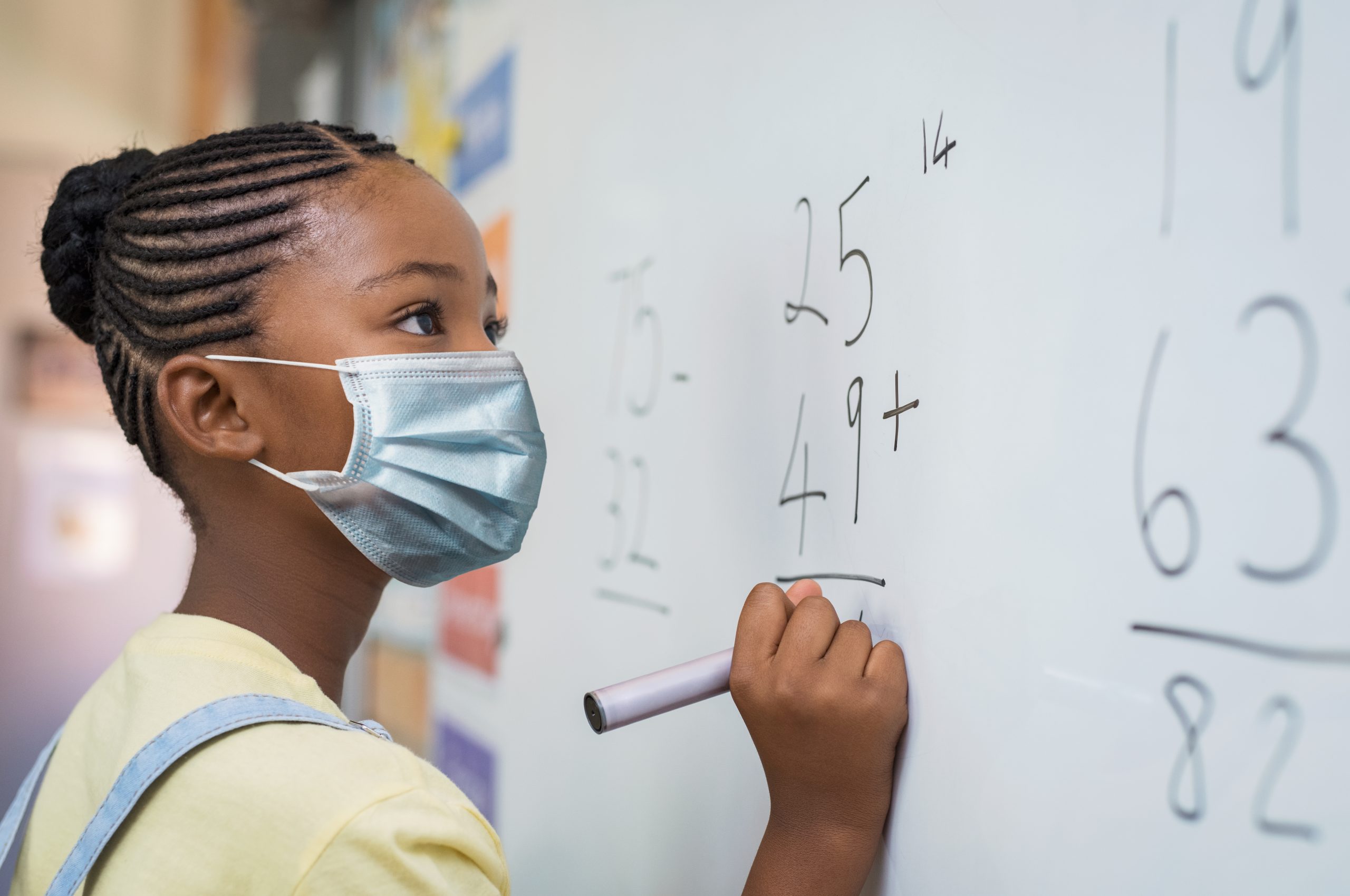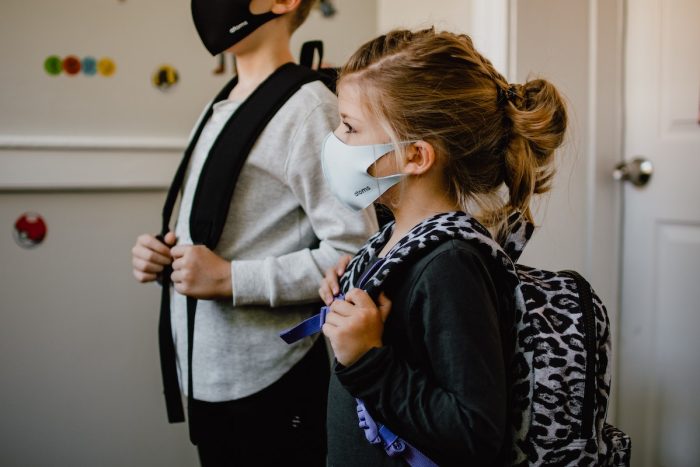
COVID-19 has led students, teachers, and parents to face an unprecedented challenge: how to educate and learn during a pandemic. Teachers suddenly had to adjust to teaching online, students of all ages were forced to learn on a computer, tablet or phone, and parents had to learn how to balance assisting their children while keeping up with the household and their own job. With the return of school came uncertainty in how schools would open and provide education while preventing the resurgence of COVID-19 cases. Schools continue to have the unenviably difficult job of planning for multiple possible scenarios for re-opening and reclosing: virtual online learning, a fully in-person education, or a hybrid model where part of the week students go into school. The plans continue to vary across the state, and even across school districts depending on schools’ size, spaces, ventilation, and resources. And now with many schools having re-opened, there is the constant risk of classrooms or entire schools re-closing if COVID-19 cases increase. Currently the NYC schools are closed due to an uptick of cases in the five boroughs.
The following are some educational challenges and ways to manage them depending on the school re-opening/reclosing scenarios:
Elementary School-aged Students: Limitations for many include less outdoor and physical activities, less opportunity for social skill development and interactions. For the younger child, virtual learning is particularly challenging because of more limited attention spans. Teachers must be even more animated and creative in engaging students than when in person. Furthermore, parents of younger children have more responsibility for their children’s participation in online learning. This becomes a great challenge for those parents who have demanding jobs – whether they are out of the home or not.
Children with Developmental Disabilities: Online learning can be particularly challenging for those who receive support from schools and outside agencies. In fact, the AAP and AACAP advised this group of students to have priority in terms of returning to schools in-person. Depending on the schools’ ability and/or the family’s risk vulnerability, these students may have to continue to learn virtually from home. Challenges may include a need for highly structured schedules, behavior reward plans, and various types of therapies. In these cases, keeping in touch with school staff personnel with expertise is essential.
Middle and High School Students: The preadolescent and adolescent stage of development is a time where peer social life dominates. Developmentally, teens are practicing becoming more independent and less reliant on their parents. The peer interaction and connection to friends provides a way to cope with many issues during these years– missing the socialization is a big loss for this age group. And for all those students who are attending school remotely, staying focused on virtual platforms in settings with many distractions can be quite difficult. Virtual learning requires more self-pacing, and a reliance on their own executive functioning, meaning the ability to plan, structure and organize schoolwork. And lastly, for many students in this age range, sleep has been greatly affected, impacting their ability to sign on to morning classes.
Some ways to manage challenges for children attending school solely remotely include:
One clear challenge is keeping up with which days students go to school and which days they are at home. Keep a calendar available, reviewing it at the beginning of the week to ensure it is accurate since many schools switch days biweekly. For older kids, have a shared calendar among all family members.
Some students may express initial anxiety about being divided from their friends in the hybrid plan. Empathize with the disappointment, but also remind them of the opportunity to meet new people.
Many children have been, and continue to be, excited about being back at school. What I have been hearing from school staff is that the students’ energy is palpable through the hallways—but nonetheless, it is different. Many students are waiting in long lines to get screened before entering school. Many are eating lunch in the classroom. By the end of the school day, many students return home as extracurricular activities have been canceled in several school districts, and it feels much different than the busy active time it was pre-COVID when students stayed behind for afterschool activities and sports.
How parents and PCPs can help children overcome fears of contagion, and the possible disruption of the in-person model:
The decision to have children return to school in person, learn on a hybrid model, or learn on a fully remote model, is a personal one and unique to each family’s circumstances. To stay centered during this challenging time, families may have already, or want to going forward, incorporate a ritual at the end of the day, such as to listing three things each family member is grateful for. Alternatively, family members could share things that went well, that were funny, or made them feel good during the day.
This continues to be a challenging time for many, and in particular for some populations which have been impacted more than others. What is important to know is that you are not alone, and that there are many community organizations there to support you, including Project TEACH.
Continue to: Schooling in the Time of COVID, Part 3 of 3
Child

Child
